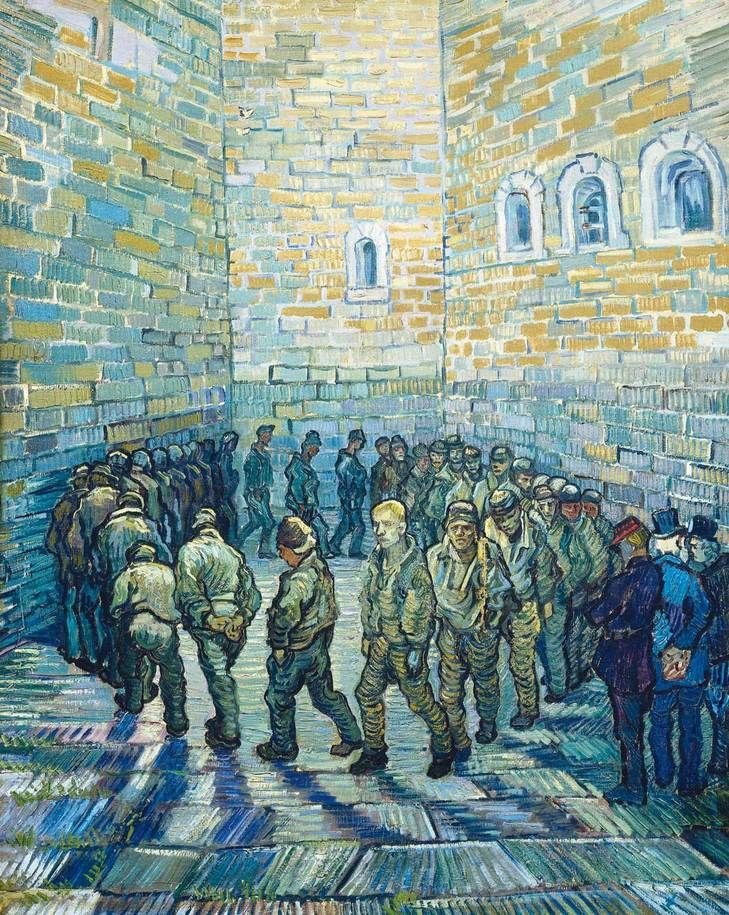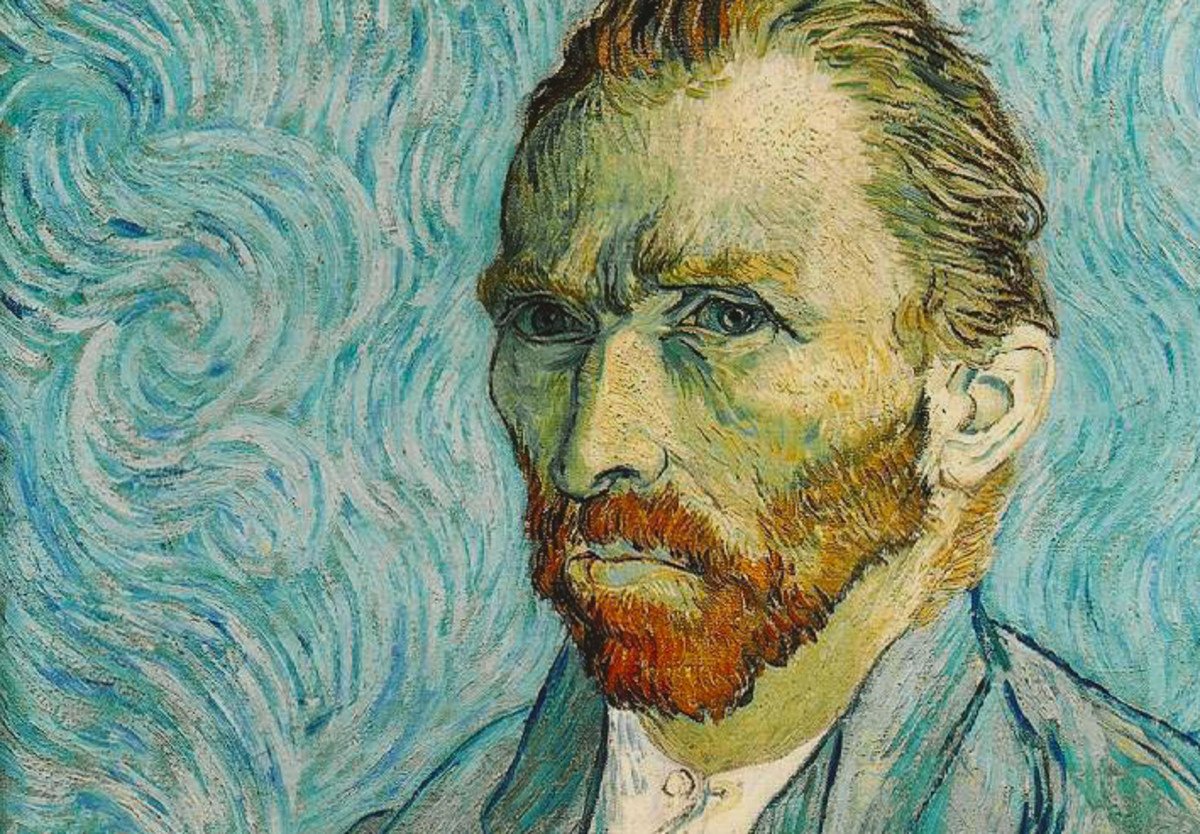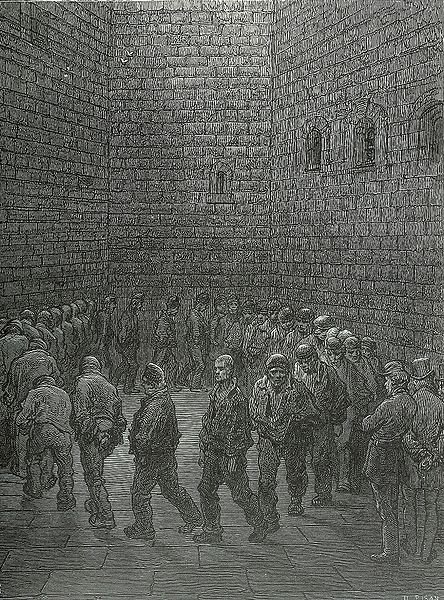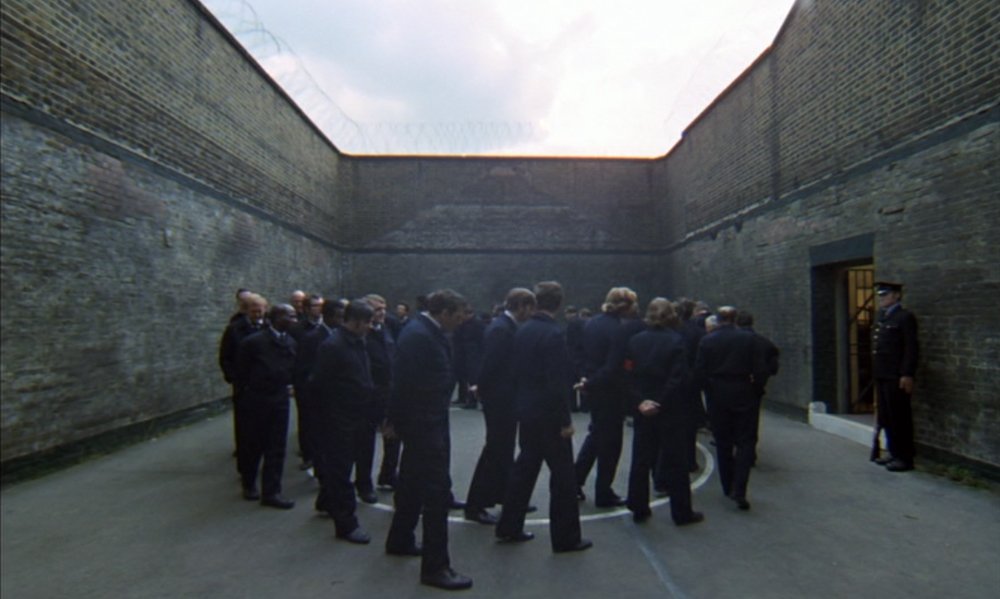¡Hola a todos!
Les traigo un interesante análisis sobre La ronda de los presos de Van Gogh, una hermosa pintura con un significado oscuro.
Hi, everyone!
Here's a very interesting analysis about Van Gogh's painting Prisoners' Round, a beautiful painting with a dark meaning.

Autor: Vincent Willem Van Gogh
(1853 - 1890)
Título: La ronda de los presos
Año: 1890
Técnica: Óleo sobre lienzo
Dimensiones: 80 cm × 64 cm
Colección: Museo Pushkin, Moscú
Perteneciente al movimiento postimpresionista, este lienzo fue pintado por Van Gogh durante su estancia en el manicomio de Saint-Rémy, al cual igresó voluntariamente. Este era un lugar solitario rodeado de campos de trigo, viñedos y olivares, con habitaciones de ventanas enrejadas y desolados pasillos.
El director, el Dr. Peyron, ni siquiera era especialista en enfermedades mentales, y llevaba el sanatorio con una economía rigurosa, limitándose a que los pacientes siguiesen con vida.
Sin embargo, el pintor gozaba de libertad para retirarse a leer, pasear o pintar al aire libre, acompañado de un vigilante. Además, había habilitado una habitación cerca de la suya a modo de estudio.
Author: Vincent Willem Van Gogh (1853 - 1890)
Title: Prisoners' Round
Year: 1890
Technique: Oil on canvas
Dimensions: 80 cm × 64 cm
Collection: Pushkin Museum, Moscow
Belonging to the post-impressionist movement, this canvas was painted by Van Gogh during his stay in the Saint-Rémy's asylum, in which he had entered voluntarily. This was a solitary place surrounded by fields of wheat, vineyards and olive groves, with rooms with barred windows and desolate corridors.
The director, Dr. Peyron, was not even a specialist in mental illness, and he ran the sanitarium with a rigorous economy, limited to keeping patients alive.
However, the painter enjoyed the freedom to retire to read, walk or paint outdoors, accompanied by a guard. In addition, he had enabled a room near hers as a studio.

No obstante, sufrió una recaída a comienzos de 1890. Su estado depresivo le llevó a comunicarle a su hermano Theo su intención de abandonar el hospital, cuya atmósfera se le presentaba como una prisión desde que le retiraron el permiso para salir a pintar.
Debido a esto, Vincent se dedicó a copiar estampillas a falta de contacto con la naturaleza de los jardines del manicomio, que varias veces había pintado. Entre ellas, Los prisioneros ejercitándose de Gustave Doré, con la cual representa la situación en que se encontraban él y el resto de los internos.
Nevertheless, he suffered a relapse in the early 1890s. His depressed state took him to tell his older brother his intention to leave the hospital, which atmosphere presented to him as a prison since his permission to paint outside was removed.
Because of this, Vincent dedicated himself to copying stamps in the absence of contact with the nature of the asylum's gardens, which he had painted several times. Among them was Prisoners exercising by Gustave Doré, with which he represented his situation and the state of the rest of the inmates.

Inmersa en una irreal luz azulada, la escena resulta bastante claustrofóbica, pues no sólo no existe ningún horizonte y los muros de la prisión parecen prolongarse hasta el infinito, sino que, además, la forma poligonal contribuye a aumentar dicha sensación, acentuada por el círculo de presos, que parece dar vueltas sin fin.
Van Gogh se siente ahora asfixiado en ese lugar, por lo cual, en el preso más cercano al margen del lienzo (el que vuelve la mirada al espectador) Vincent se ha representado a sí mismo. Sin embargo, aunque las caras denotan sufrimiento y un profundo pesimismo, dos pequeñas mariposas, casi imperceptibles, vuelan despreocupadas, simbolizando esperanza y libertad.

DATO CURIOSO
El director Stanley Kubrick, en su película La naranja mecánica, hace una clara referencia a este cuadro durante la escena en la prisión del protagonista.
Immersed in an unreal blue light, the scene is quite claustrophobic, because not only is there no horizon and the walls of the prison seem to extend to infinity, but also, the polygonal shape helps to increase this feeling, accentuated by the prisoners' circle, which seems to go around without end.
Van Gogh now feels suffocated in that place, so, in the prisoner closest to the margin of the canvas (the one who looks back at the viewer) Vincent has represented himself. However, although the faces denote suffering and a deep pessimism, two small butterflies, almost imperceptible, fly carefree, symbolizing hope and freedom.

CURIOUS FACT
The director Stanley Kubrick, in his film A clockwork orange, makes a clear reference to this painting during the protagonist's prison scene.

¡Gracias por leerme!
Thank you for reading!
Historia de arte - La ronda de los presos
Impresionismo - La ronda de los presos
Si quieres saber más sobre mí, lee mi presentación en Steemit
If you want to know more about me, heres my #introuceyourself post
